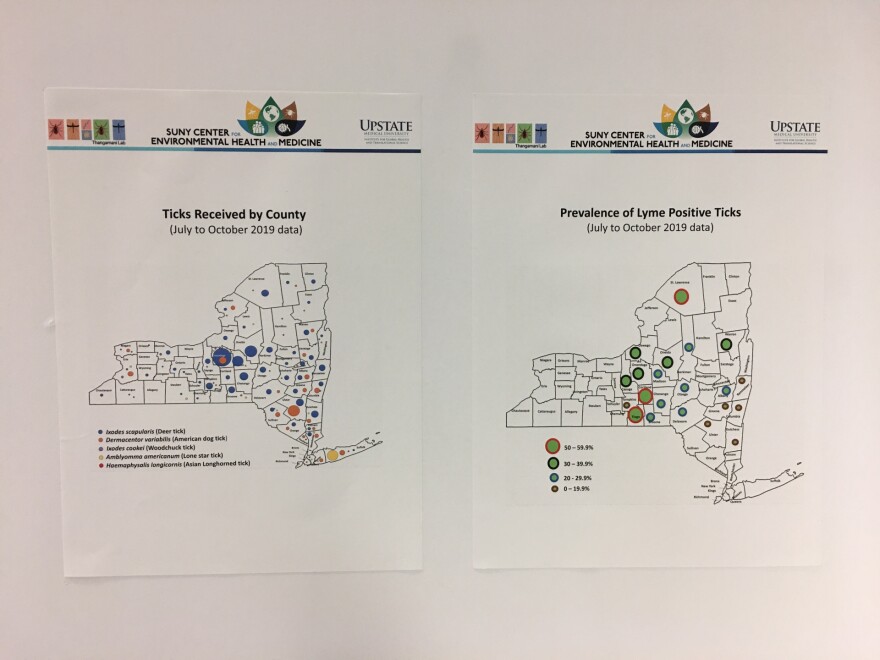Nearly 2,000 people sent ticks to a citizen science tick testing program run by Upstate Medical University in Syracuse this year. The data collected will help scientists figure out how and where tick-borne diseases are transmitted to humans.

Upstate Microbiology and Immunology Professor Saravanan Thangamani started encouraging central New Yorkers to send ticks to his lab in July. Since then, the program expanded to the whole state. On average, citizens sent in 70 samples a day, with seasonal variations. There were more in July, fewer in September, then a spike in October.
The lab tested these ticks for a variety of diseases, including Lyme Disease, and sent results back to citizens.
"So they can actually take that information and go and do proper landscaping in such a way that they can try to avoid the ticks," Thangamani said. "Which means they are preventing getting additional tick bites, which means they are preventing themselves getting sick. So that is, in my opinion, that is the most significant outcome of the study."
Thangamani said that while about a third of the ticks tested were found to carry some kind of disease, it’s hard to generalize because of differences in seasons and geographical locations.

"Four months of data is premature for us to come up with a conclusion," he said. "Maybe with three or four years, because we can normalize all the compounding errors and everything will be normalized and we will have a proper analysis."
Thangamani said the most disturbing discovery was a tick from downstate that tested positive for both Deer Tick or Powassan Virus as well as Lyme Disease. If transmitted, they can be a deadly combination at worst.
Thangmani's lab hopes to use this information to discover what’s behind the increase in ticks and tick borne diseases across the state. So he’ll be asking for more samples in years to come.
"Every single tick we receive is a data point for us. So over the next few years we will try to collect in the same way, and try to understand the environmental factors of tick and tick borne disease transmission," he said.
Thangamani said residents can still send ticks to his lab if they find them in the colder months. Information on how to send in ticks can be found here.








